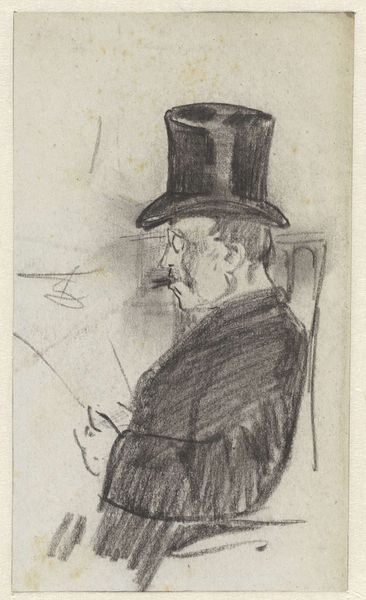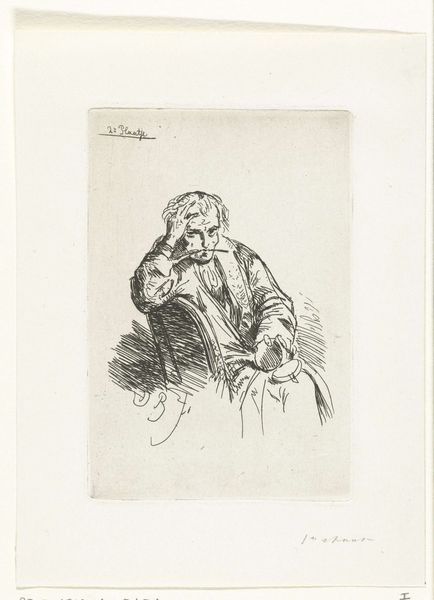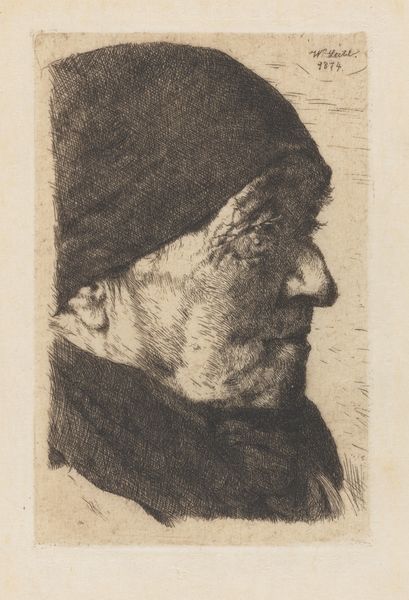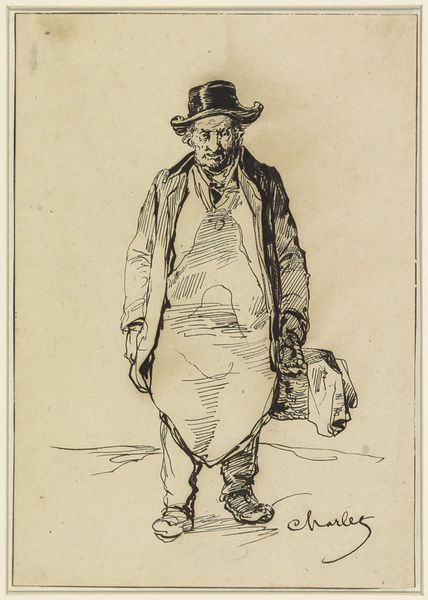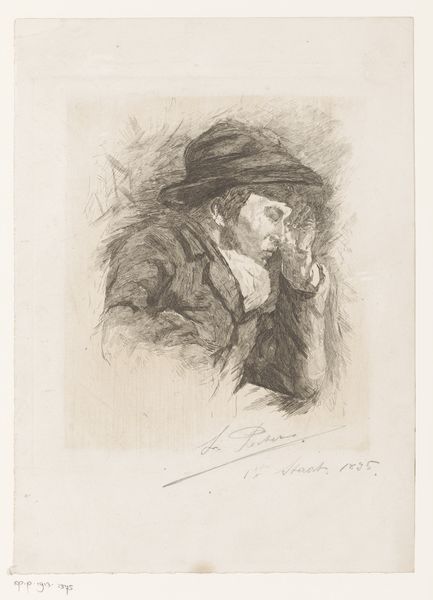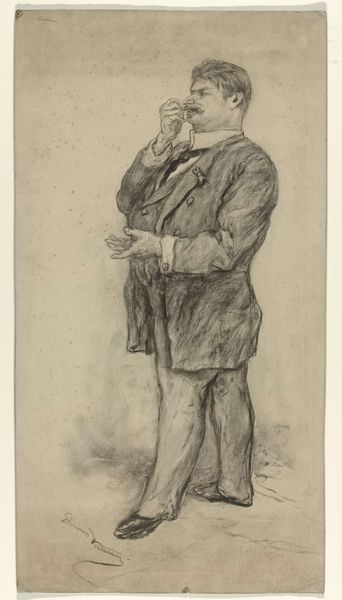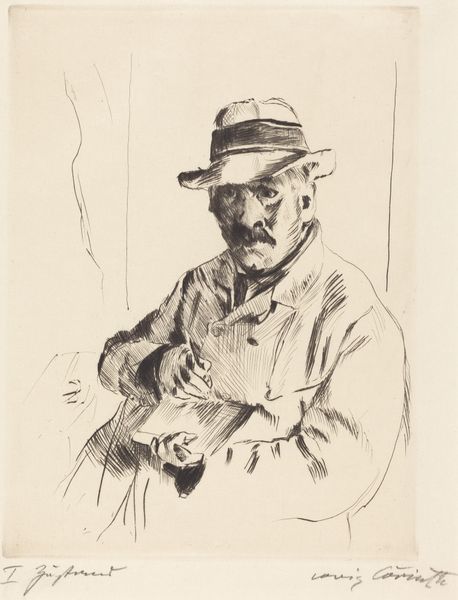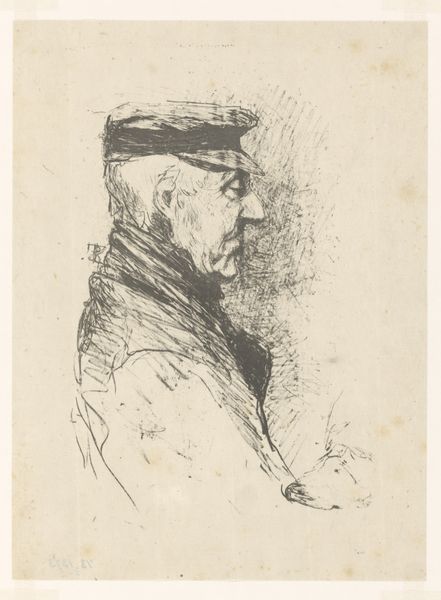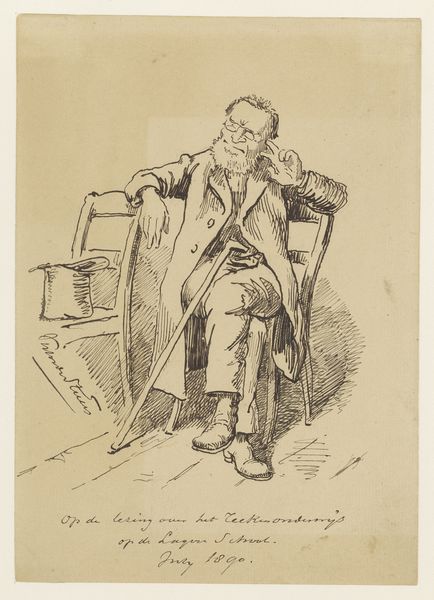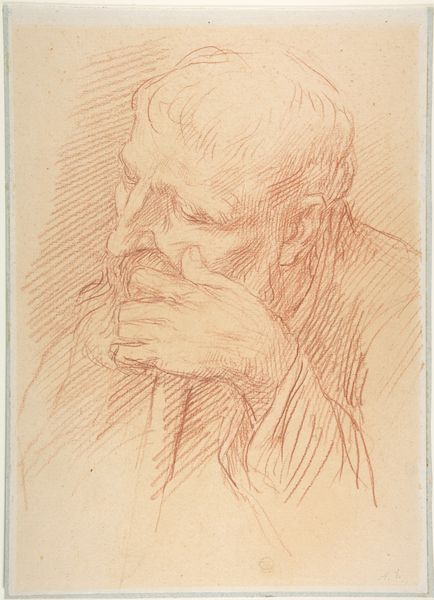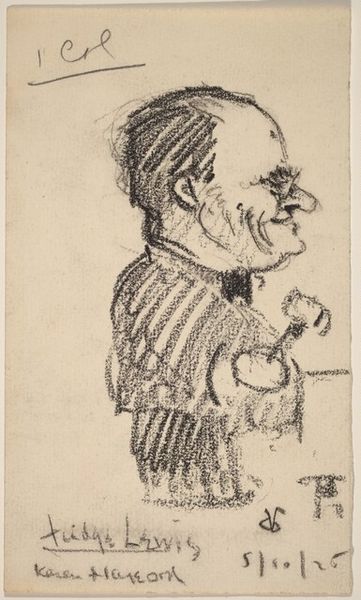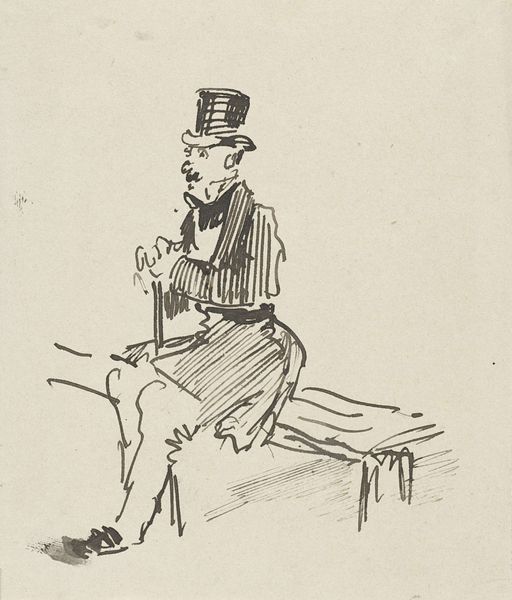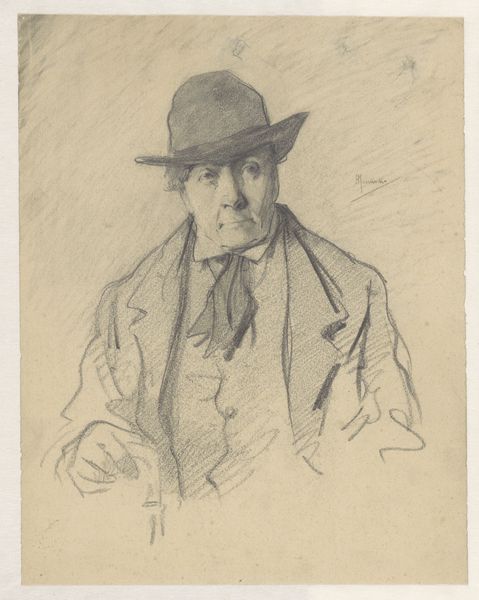
Copyright: Public domain
Paul-Albert Besnard created this etching, Edmond Pigalle, in 1881. The loose sketch captures Pigalle in a moment of introspection. But who was Pigalle, and why did Besnard choose to immortalize him in print? This image speaks to the rise of the bourgeoisie in late 19th-century France, a social class defined not by aristocratic birthright but by its embrace of commerce, industry, and professional life. Pigalle's dress—his bowler hat and draped coat—suggests a man of some standing, perhaps a writer, intellectual, or a successful businessman. Besnard, a celebrated academic painter, was moving in increasingly progressive artistic circles at this time. The etching medium itself is significant. It allowed for the relatively quick and inexpensive reproduction of images, thus breaking away from the elitist nature of painting, and enabling a wider distribution of art to the emerging middle class. To fully understand this work, we might delve into Parisian society of the 1880s, examining census records, newspapers, and exhibition reviews. By doing so, we begin to understand art as a reflection of its time, shaped by social forces and institutional structures.
Comments
No comments
Be the first to comment and join the conversation on the ultimate creative platform.
